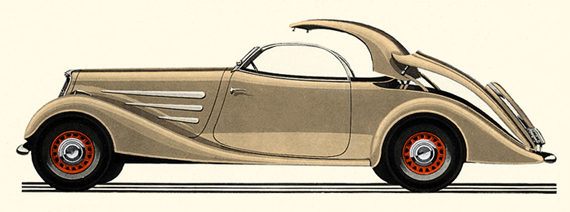
The remarkable disappearing hardtop, circa 1933. The 1933/1935 Peugoet 301 Eclipses were coachbuilt by Pourtout but marketed by the Peugeot dealer organization.
By Gijsbert-Paul Berk
During the 1930s, our Three Musketeers, together and individually, were involved in a number of projects with French, Italian and British carmakers.
Lancia
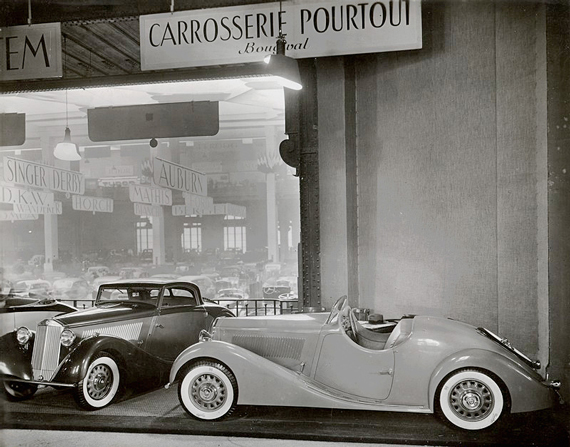
When Pourtout showed the first special bodies for the French made Lancia Belnas at the Paris Motor Show, he still worked in Bourgival . That can be seen on the sign above his stand. But in order to manufacture these bodies in limited series, he acquired the Hurtu car factory and moved his activities to Rueil-Malmaison.
In 1934-35, Carrosserie Pourtout transferred it activities from Bourgival to the Paris suburb of Rueil-Malmaison. In fact Marcel Pourtout acquired the factory of Hurtu Automobiles in the Rue Paul Doumer. The extra space, facilities, and its trained workers were what he needed to produce small series of special coachwork. There was another reason, however; the proximity to a new factory opened by Lancia.
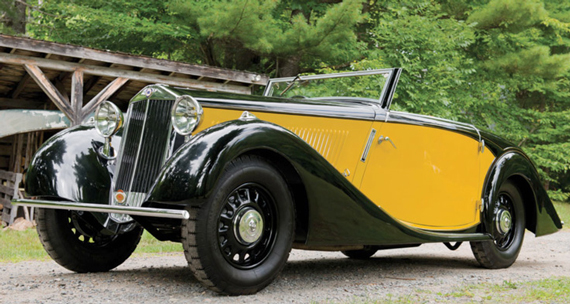
Sorry, you are too late! On Wednesday February 4, 2015 this 1934 beautiful Lancia Belna Eclipse by Pourtout went under the hammer at RM Auctions and was sold for € 212.800 It was estimated at over 300.000 so the new owner must be a happy person. (Photo courtesy RM auctions).
To avoid paying the sky-high import duties in France, the Italian car manufacturer Lancia, had opened a factory in Bonneuil-sur-Marne (in the Ile de France region). There, Lancia was building the Belna berlina (sold as Lancia Augusta in Italy and elsewhere) and Pourtout had got a contract to build their roadsters, fixed-head coupes and a number of ‘Eclipses’. The order for the first year was no less than 365 of these special-bodied Lancias.
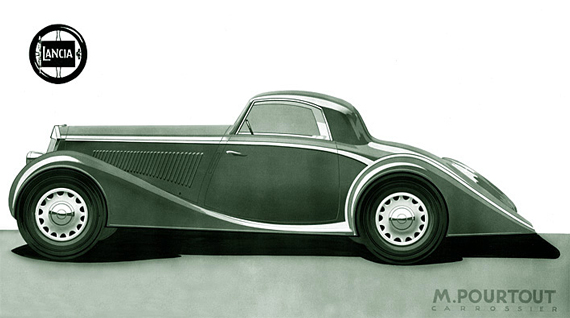
Georges Paulin not only designed the bodies but also made the artwork for the folders of the Lancias with a Pourtout coachwork. These cars were sold by the Lancia dealers in France. (Illustration courtesy Claude Pourtout)
For Georges Paulin, Pourtout’s move to Rueil-Malmaison was also a stroke of luck. He lived and had his dental practice practically around the corner. Now he could spend every free hour with his friend Marcel at his coach building Valhalla. Gradually he became Pourtout’s in-house stylist.
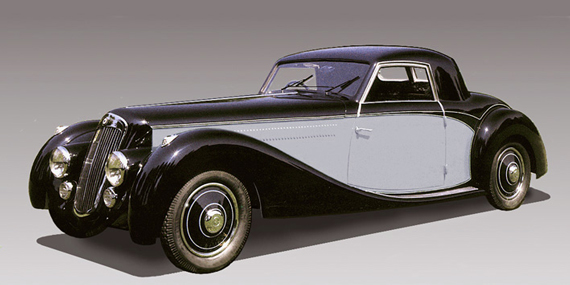
It is quite clear from its style that Georges Paulin also was responsible for the design of this Pourtout coupé on a Lancia Astura chassis.
Darl’mat
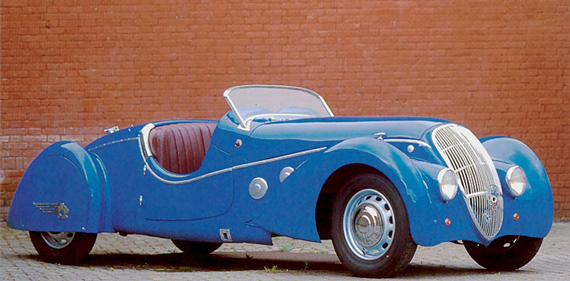
This 1937 Darl'mat Super Sport is now part of the collection of the Musée de l’Aventure Peugeot in Sochaux, Département du Doubs / Franche-Comté. (Photo courtesy Musée de l’Aventure Peugeot)
At the 1936 Paris Motor Show Peugeot introduced its four-door 302 model. Emile Darl’mat saw in this new car with its 1758 cc, four cylinder, overhead valve engine, an excellent base for a small sports roadster. He discussed this idea with Pourtout and Paulin and also contacted the Peugeot factory to obtain their cooperation.
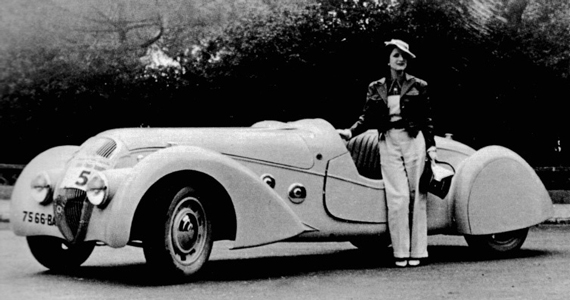
The Darl’mat Super Sport not only won prizes on the racetracks in France but also at the various Concours d’Elegance in its home country. (Photo courtesy Agence Roll, Paris)
The result was the desirable Darl’mat Spécial Sports. To establish its performance and stamina competition manager Charles de Cortanze took the first car that was completed to the Montlhéry circuit, were it was driven during 24 hours at an average speed of 138,28 Km/h. During the 1937 / 1938 season the small Darl’mats earned quite a reputation.
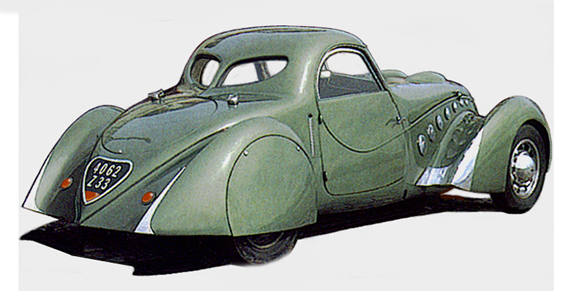
1n 1937 George Paulin also designed this mean looking two-seater coupé body for the 402 Darl'mat Super Sport and Marcel Pourtout oversaw its construction.
Fitted with the 2 liter overhead valve engine of the larger Peugeot 402, they competed with success in a great number of events. Amongst them the 24 hours race at Le Mans. Apart from the roadsters Darl’mat also offered a drop-head coupé and a fixed head coupé. In 1939 Darl’mat intended to break a number of speed records and prepared a car that was to have a top speed of over 200 Km/h. But the war stopped this ambitious project.
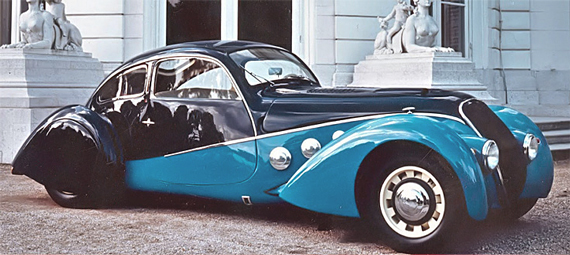
During the winter of 1938-39 Paulin and Pourtout developed this experimental fastback coupe body for Darl’mat . Although heavier than the Super Sports roadsters its better aerodynamics increased the top speed. It was destined to attack records at Montlhéry and to participate in some for long distance races.
Renault
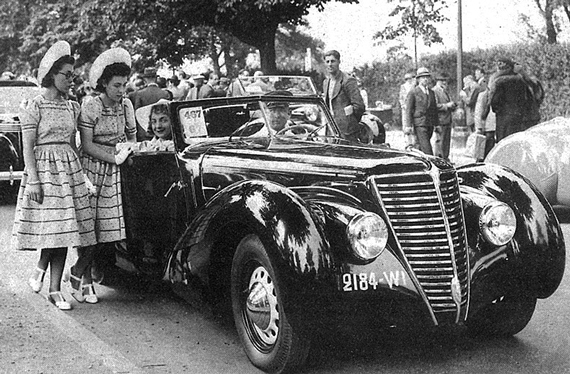
Renault also became a client of the duo Pourtout - Paulin. Here is one of the Renault Primaquatre cabriolets, ordered by Saprar, being presented at a Concours d’Elegance in Paris. (Photo courtesy Renault archives)
Louis Renault, the mighty car manufacturer at Boulogne-Billancourt, was so impressed by the design and execution of these cars that he instructed his subsidiary Saprar (the spare part division) to commission no less than 26 similarly-styled Pourtout bodies to be fitted with the engines and drive trains of the Renault Primaquatre. One of them was a very elegant two-door Sports Coach.
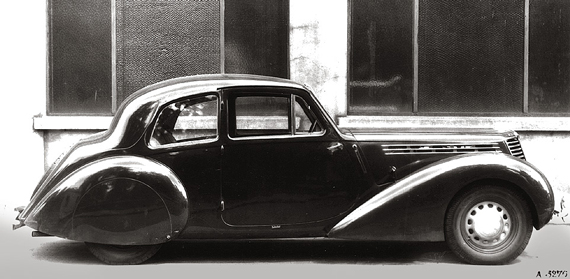
In the autumn of 1938, after the Renault Primaquatre roadsters and cabriolets had proven to be a sales success, Saprar commissioned Paulin and Pourtout to create a sporting four-seater coach. Claude Pourtout believed that in 1939 only this prototype was delivered to Renault and because of the threat of the looming war there never was a production version. (Photo courtesy Renault archives)
Peugeot
Meanwhile Peugeot had become highly interested in Paulin’s ‘Eclipse’ concept. After ordering a number a number of these bodies for their 301 and 401 models from Pourtout, the company wanted to produce their new 402 ‘Eclipse’ convertible at their own factory in Sochaux.
They offered to buy the manufacturing rights on a pro-rata or royalty basis. This way Paulin would get paid for every car that used his patent. However, the payments he received for his invention were so small that afterward he felt cheated by the lawyer who drew up the contract for Peugeot.*
Riley TT Sprites
One of the next orders for Carrosserie Pourtout concerned the British make Riley. Jean Eudel, the Parisian agent for Riley cars, was also very impressed by the aerodynamic lines and low weight of the Darl’mat Spécial Sports. Teaming up with the French architect Guy Lapchin, he wanted their Ecurie Eudel to run in the French national sports car races, including Le Mans. With this in mind Eudel approached Pourtout and Paulin commissioned them to fit three Riley Sprite chassis with a body similar to those of the Darl’mat roadsters.
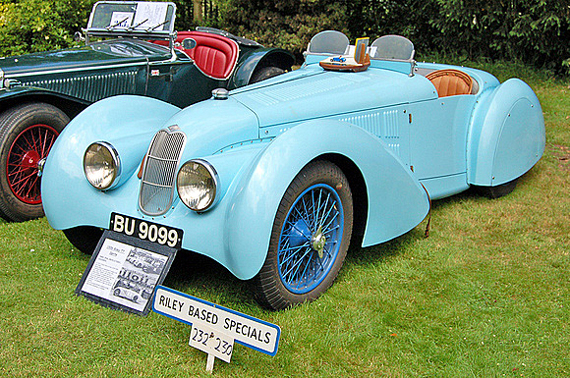
It is not so surprising that the Pourtout bodied Riley TT Sprite racers of the Ecurie Eudel looked like one-egg twins of the Darl’mat roadsters. Their coachwork was based on the same design Georges Paulin had made for the French cars. That was exactly what Jean Eudel, the Parisian agent for Riley cars, had wanted.
These Riley TT Sprites with their four-cylinder OHV engines of only 1496 c.c. proved to be very fast, but the team had little luck. During the 1937 Le Mans race all their cars were somehow implicated in the tragic pile up that took place at an early stage of 24 hours. Their only impressive result was a 2nd, 3rd and 4th place in the separate race before the French Grand Prix at Montlhéry that year, called the Coupe de la Commission Sportive. After Lord Nuffield absorbed the ailing Riley Car Company in his industrial group, the Ecurie Eudel was dissolved.
Bentley
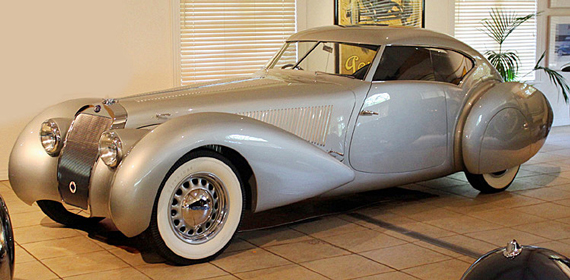
This Delage D8 120 S Aero coupé was built as the personal car for Louis Delage and exhibited at the Delage stand on the 1937 Salon de l’Automobile in Paris. Its modern and aerodynamic shape gave Walter Sleator, the agent for Rolls-Royce and Bentley in France, the idea to convince his client André Embiricos to commission the coachwork for his new Bentley at Carrosserie Pourtout and engage George Paulin to design it.
The background of the involvement of Pourtout and Paulin with Bentley is rather well known. At the 1937 Paris Motor Show Walter Sleator, head of Franco-Britannic Automobiles, agents for Rolls-Royce and Bentley in France, admired the impressive Delage Aero coupé, Paulin had designed and Pourtout had built on a D8 120 S chassis. It was the personal car for Louis Delage, the boss of that famous automobile marque.
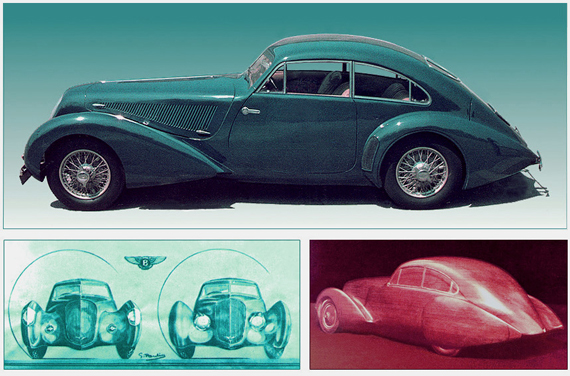
The engineers at the Bentley factory in Derby finally with agreed with their Paris agent Walter Sleator to let George Paulin design the Bentley for André Embiricos and accept Marcel Pourtout as the coachbuilder, after Paulin had shipped a number of detailed drawings tot them and a scale model for wind tunnel tests.
Sleator was very impressed with what he saw. Then André Embiricos, a Greek shipping magnate walked into his showroom. He explained that he was interested in buying a Bentley but wanted a stylish aerodynamic body and a transmission adapted for of high speed cruising. Sleator saw an opportunity to convince the Bentley management that they should add a model to their range, which could attract customers who now bought expensive and fast continental cars such as Alfa Romeo, Bugatti, Delage, Delahaye, Mercedes-Benz or Talbot Lago. He told Embiricos that he would immediately contact the factory and proposed Pourtout for the coachwork and Paulin as designer.
The first reaction from the factory was negative. They were not familiar with the work of either Pourtout or Paulin. The Rolls-Royce/Bentley engineers recommended Vanvooren in Courbevoie as coachbuilder, because they had excellent experiences with this company and its director Marius Daste. For the design they preferred the French aerodynamics expert Jean Andreau. He had proven his skills with the streamlined body for the experimental Ford based Dubonnet Dolphin and the aerodynamic Peugeot 402 Andreau.
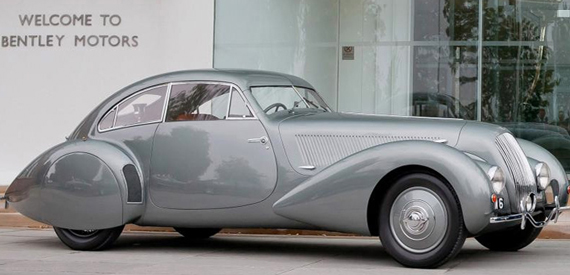
Thanks to H.S.F ‘Soltan’ Hay, who bought the car from André Embiricos, the Paulin / Pourtout Bentley coupé survived. Hay participated in 1949, 1950 and 1951 with it in the 24 hours race at Le Mans. In 1949, when the car had already done about 100000 miles, Soltan Hay and Tommy Wisdom achieved a commendable 6th place with it. At the occasion of the introduction of the latest Bentley Continental model in August 2012, the emblematic Embiricos car received a star treatment at the factory in Crewe.
It was only after Paulin sent a an impressive set of technical drawings and a perfect wooden scale model to Derby for wind tunnel testing at the Vickers Aircraft Company, that William A. Robotham, the head of Rolls-Royce’s chassis design and development division, relented.
In March 1938 the 4¼ liter Bentley chassis, B27LE, with a few minor modifications to improve its performance, was shipped to Rueil-Malmaison. Pourtout made most of the body panels out of aluminum and thus reduced the weight by over 100 kilograms compared to the standard Bentley coachwork. After the car was finished Embiricos allowed Sleator to have it tested at Montlhéry and the autobahns in Germany. There it was clocked at 190 Km/h (118 mph). Then George Eyston, holder of the World Land Speed Record, was asked to drive the Bentley round the Brooklands track. Eyston’s officially timed fastest lap was 115.55 mph (185.96 Km/h. This was faster than French Grand Peix driver Robert Benoist had managed in a Bugatti Type 57C at Montlhéry a few weeks earlier.
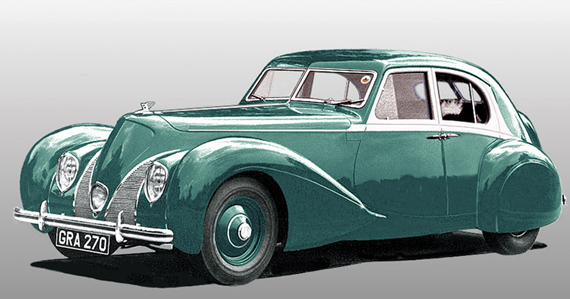
German bombs destroyed the actual car, but this illustration gives an idea how the prototype of the Bentley Corniche looked. Georges Paulin was engaged by the experimental department in Derby to assist with the design of their new aerodynamic lightweight four-door Bentley, planned for 1940.
The Rolls-Royce/Bentley management were now convinced about Georges Paulin’s extraordinary talents. He received a request to help with the design of their new Bentley Corniche four-door saloon and was invited to visit Derby. But as Paulin spoke no English and the Bentley engineers no French, their only means of communications was by exchanging free hand sketches. However, during a second trip to Britain he was received by Alex Harvey-Bailey, the son of the Chief Production Engineer at Rolls-Royce/Bentley. Alex spoke perfect French and later came over to Rueil-Malmaison to help Paulin with the drawings and learn about styling. Apart from a low wind resistance, limiting the weight became also an important requirement, because in those days the tires of large heavy cars could not safely withstand continuous driving at high speeds. For reasons of internal politics, Rolls-Royce confided the construction of the Corniche coachwork to Vanvooren in Courbevoie. Unfortunately, while awaiting transport to Britain, the prototype was destroyed during an attack by German Stukas (Junkers Ju 87, dive-bombers) on the port of Dieppe, in the first days of WW II.
*Why were there no retractable hardtops between 1965 and 1990? Who invented it? What cars offer one today? Why is it going out of fashion…again? Gijbsert-Paul Berk answers these and many other questions in Top Acrobatics, the saga of the disappearing hardtop.
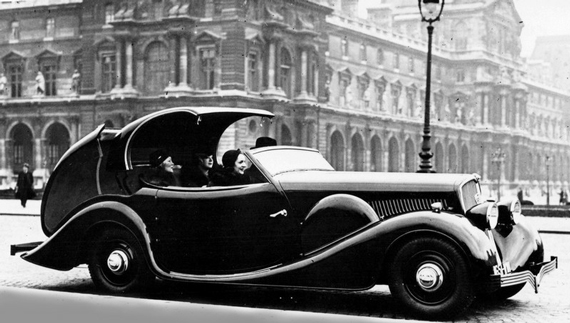
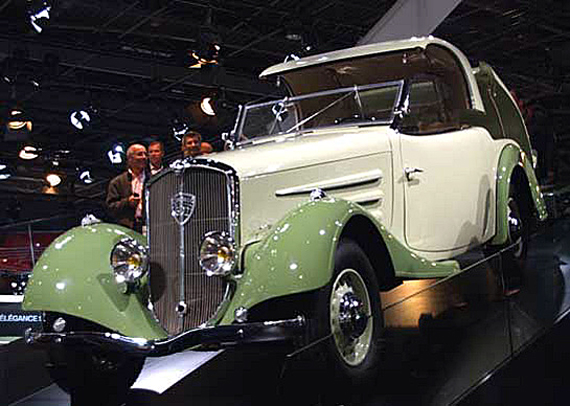
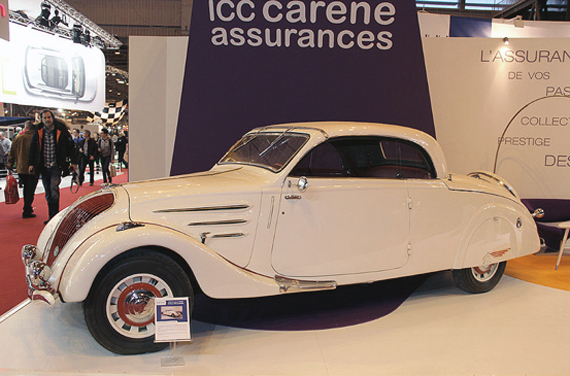
Just brilliant, thanks. I edit the bi-monthly magazine of the New Zealand Rolls-Royce & Bentley Club (Inc), and have reviewed several Veloce books for our magazine, and the SpeedReaders web site in America.
Love the Bentley.
I had always thought that after being taken over by Rolls Royce, the Rolls based Bentley cars lacked the sporting refinement and lustre. So glad to finally be proved wrong – but a pity its only one car though.
I read a book when I was a boy, I think it was called just “WO” and it detailed the take over of Bentley by RR and how the beautifully machined magnesium alloy Bentley crankcases were “smashed with hammers” by the take over crewe (sic)…I was sad then, even more so now.